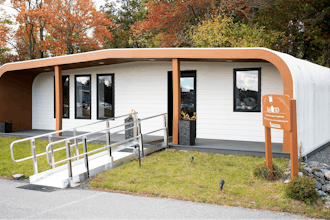There are dozens of reasons industrial businesses consider building portions of their IoT solutions in-house. “No off-the-shelf solution can tackle my business’ unique requirements” is one popular concern. “A hands-on approach will yield the best result” is another common belief. When it comes to IoT, manufacturers need to strike the right balance between building and buying or else they’ll sacrifice quality, cost, and time to value.
IoT device management is one such area where buying is typically superior to building.
That’s because managing IoT devices leaves organizations vulnerable to issues related to scale, security, and connectivity. These problems can compound quickly too, leading to rapidly rising costs and stalled progress.
Before committing to building your own IoT device management solution, consider the following pitfalls that can plague a DIY project.
No. 1 - A less sophisticated solution opens the door to new costs
Manufacturers regularly collect vast amounts of data from thousands of sensors built into motors, conveyor systems, five-axis machines, and other physical assets throughout their factories. Because downtime can drastically impair their bottom line, they will often overspend for maintenance services to ensure equipment is up and running again quickly.
A purpose-built IoT device management solution can help avoid these over-investments by connecting every corner of the factory floor—facilitating enhanced monitoring that can trigger alerts when critical conditions arise and pave the way for more proactive maintenance strategies. It can also enable more advanced automation to help optimize processes and material flow for more precise planning, just-in-time manufacturing, and workplace safety. The resulting ROI potential is exceptional, with benefits that include minimized operational costs, process consistency, and reduced duplication.
No. 2 - Manual processes wreak havoc on team productivity
Heading into a DIY IoT deployment, organizations generally miscalculate internal capabilities and rely on existing personnel to quickly and easily provision, configure, monitor, update, and eventually decommission equipment throughout the factory. In reality, a simple in-house IoT project can take a team of five to eight developers multiple years to build and debug. Not to mention the time and resources needed for ongoing support and any operational costs. So, if your staff is struggling to physically maintain devices, you need more automation.
A pre-built solution allows manufacturers to organize devices into logical groups so that over-the-air (OTA) software updates, bulk configuration changes, maintenance, and management of software licenses can be done more efficiently. With these real-time change updates, they can also reduce the workload of IT, operations, and engineering staff.
No. 3 - Laborious repair practices stifle revenue
To accelerate ROI and reduce potential risks of an IoT deployment, manufacturers need to expand their device fleet quickly and reliably. You may think keeping a few devices online and connected is easy, but the task grows exponentially more difficult at scale. And the stakes increase with each additional unit, as even one going down can undermine an entire IoT project and lead to lost production or revenue.
Organizations can ill afford insecure cloud connections or laborious repair practices as device counts rise, which is why a pre-built solution may be the answer. It can help scale devices and minimize missed opportunities and operational bottlenecks. Though it may mean higher upfront cost, the total cost of ownership will lessen due to reduced unplanned downtime and the maintenance costs associated with it.
No. 4 - Custom builds delay time to value
Once an IoT project schedule has been set, there is no time to waste. Yet, testing and fine-tuning represent an important part of designing the optimal solution. Building an IoT solution from the ground up therefore wastes precious time you could be spending designing the most dialed-in solution.
With an out-of-the-box IoT device management solution, businesses can start with a core set of building blocks. This saves valuable time for exploring the best approaches, customization and focusing on quality first and foremost.
No. 5 - Home-grown solutions can have limited sophistication
Success in the manufacturing sector requires every machine, production line, and employee working in harmony to achieve optimal yields, high operational efficiencies, and cost controls. With so many moving parts and multiple groups of devices with different configuration profiles, successfully managing the complexities and scope of day-to-day operations may fall outside your team’s current capacity.
If your team has purposely limited the sophistication of your device management strategy, it’s time to reconsider your approach. A pre-built solution can ensure that a manufacturer is getting the data necessary to extract operational insights that can create competitive advantage. It can also offer intelligence that reduces risk and accelerates time to market at a predictable cost.
The next time the build vs. buy argument arises, have a plan for comparing and contrasting the two approaches. The trick is balancing the use of tested and true solutions with necessary program customization—neither of which are mutually exclusive. The goal should be to avoid wasting time trying to re-invent the wheel and instead focus on optimizing operations, resource allocation, and ROI.
Dave McCarthy is vice president of IoT solutions at Bsquare.






















